National
Graves and school murders? What were we thinking?
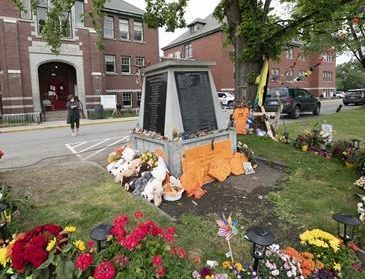
From the Frontier Centre for Public Policy
The year 2021 was the year of the Kamloops graves.
It was the top news story of the year. It was reported by CBC and all mainstream media that ground penetrating radar had detected remains of 215 indigenous children who were found buried in the old apple orchard on the grounds of the former Kamloops Indian Residential School.
The burials had taken place in secrecy in the middle of the night. Priests and nuns, who were apparently responsible for the deaths, wanted to hide the results of their crimes and forced students, “as young as six” to dig the graves of their dead classmates.
Indigenous leaders claimed there were tens of thousands more murdered and secretly buried indigenous children across the length and breadth of Canada — children who “went to residential school and never returned.”
The Trudeau government ordered flags flown at half mast, where they remained for six months. It made $320,000,000 available to indigenous communities that wanted to search for more missing children. Many accepted the offer.
2023 was the year this whole story fell apart.
There were no secretly buried children.
There were no “thousands of missing children.”
The junior ground penetrating radar operator, Sarah Beaulieu, who made her sensational claim in 2021, had most likely mistaken the remnants of 1924 septic field trenches for graves.
The indigenous children who died at residential schools mostly died of tuberculosis, as did those who never attended a residential school. Most were buried on their home reserves and their burial places had simply been forgotten.
Simply put, all of the hysteria of 2021 over secret burials and missing children was for nothing. Canada had fallen for the biggest fake news story in the history of the nation.
A new book of essays by Professor Tom Flanagan and CP Champion examines how this false story took hold and how it was debunked.
Tom Flanagan is Canada’s foremost expert on indigenous issues. Champion is the editor of the Dorchester Review, where many of these valuable essays can be found.
The essays tell the story of how Canadians fell for a story that made no sense from the outset. Why would priests kill and secretly bury children? There was no historical record of any such events ever happening.
If the children went to the residential school “and never returned” wouldn’t there be some record of such a thing happening — a parent complaining, a police report, a complaint to a chief etc.? But there was no such thing.
The odd thing is that neither CBC nor practically any other reporter asked any such questions. They not only repeated the false claims, they amplified and exaggerated them. So 215 “soil disturbances” (which is what the radar had detected) became “human remains,” “bodies,, “graves” and even “mass graves.”
Conrad Black wrote the foreword to the book. Black is one of the few Canadians who recognized from the outset the Kamloops claim was absurd. Black was also one of the few writers who has consistently denounced the disgraceful claim that Canada is guilty of any kind of genocide.
He properly criticized former Chief Justice Beverly McLachlin when she first put forward the baseless claim in 2015 and he has consistently defended Canada against such slander.
The writers (disclosure: I am one) systematically take apart the false Kamloops and copycat claims. Professor Jacques Rouillard, using research done by Nina Green proves the deaths of the KIRS students who died while enrolled at the school were properly documented, that the deaths were mainly from the diseases of the day and that the children were almost all buried on their home reserves.
These children had not been buried in secrecy, they were never “missing” and there was absolutely nothing sinister about their deaths.
Children from the community who attended day schools, or didn’t attend school at all, died in similar numbers from the same diseases. Death from disease was simply a sad fact of life and had nothing to do with whether or not a child attended a residential school.
The only “evidence” that could possibly support the secret burial thesis — apart from the usual conspiracy theories that are told in every community — was the report from Sarah Beaulieu of soil disturbances detected by ground penetrating radar that she opined could be possible graves.
However, on closer inspection these claims fall apart. The authors expose Beaulieu’s negligence in failing to research previous excavations before recklessly venturing an opinion on such an important matter.
Her other mistaken assumptions, such as false reports about a child’s tooth and bone, are also exposed. It is noteworthy the T’kemlups Band originally promised to release Beaulieu’s report to the public but reneged on that promise when it became apparent the report was unreliable, just as they have reneged on their stated intention to excavate.
The other essays examine the other claims made about evil priests, secret burials and missing children. The authors systematically dissect the claims, and expose them as the false claims that they are.
As for the claim there are “thousands of missing children” who are alleged to have entered residential schools “and never returned” to their parents, and now lie in “unmarked graves” Professor Flanagan puts it succinctly: These are not “missing children” — they are “forgotten children.” They now lie in unmarked graves for the simple reasons that their families didn’t keep up their gravesites and forgot about them.
The current grave-searching mania now occurring in indigenous communities is fueled by the $320,000,000 that then Indigenous Affairs Minister Marc Miller dangled before poor indigenous communities like golden carrots.
Other essays in the book examine other common misconceptions about residential schools, generally. One of the most persistent is the claim — consistently made by CBC for two decades — that “150,000 children were forced to attend” residential schools.
This claim is completely untrue.
Prior to 1920, status Indian parents were not required by law to send their children to any school — and most didn’t. After 1920, status Indian parents could choose between sending their children to day schools or residential schools. It is only where no day school was available that parents were required to send their children to residential schools.
But even then, there was seldom enforcement of that law. Only in the case of orphans or severe child neglect (usually due to alcohol abuse) was parental consent dispensed with (for obvious reasons).
CBC has been advised of their repeated reporting error, but continues to push this misinformation. Their justification for doing so is a word salad of obfuscation that is either meant to mislead or shows incompetence on their part.
In sum, the hysteria following the May 2021 announcement 215 “graves” had been discovered at Kamloops is not something that is easily explained. Why most Canadians seemed willing to accept such a preposterous claim in the first place will be a subject for historians and psychologists for decades.
Why the Trudeau government — without a shred of real evidence — ordered flags lowered for months; why the CBC and other mainstream media failed to ask even the most elementary questions about claims that they must have known were false; why indigenous leaders decided to put forward a false narrative that they must have known would eventually be exposed as a fraud — these are all questions examined in the revealing essays in this important book.
Although CBC — and even government publications — continue to put out fatuous claims about “graves,” “probable graves” and “human remains” the international community concluded some time ago that Canada succumbed to some kind of mass hysteria in May 2021, when the preposterous Kamloops claim was first made.
Was this national gullibility related to the strange lockdown years? Was it “Canada’s George Floyd moment? Was it “Canada’s woke nightmare?”
These are questions readers can ask themselves when reading these essays. Professor Flanagan and Chris Champion deserve a lot of credit for swimming against a tide of wokeness to put out this important book.
They are part of a research group — not afraid to be called “deniers” — who wrote the essays published in the book and initiated the Indian Residential School Research Group where additional information can be found.
For original documents and primary sources readers can go to indianresidentialschoolrecords.com.
In May of 2021, Canadians fell for “fake news”. There is an old saying: “Fool me once, shame on you. Fool me twice, shame on me”.
This book should be read with that saying in mind.
Together with the question: “What were we thinking?”
Brian Giesbrecht, retired judge, is a Senior Fellow at the Frontier Centre for Public Policy.
Business
It Took Trump To Get Canada Serious About Free Trade With Itself

From the Frontier Centre for Public Policy
By Lee Harding
Trump’s protectionism has jolted Canada into finally beginning to tear down interprovincial trade barriers
The threat of Donald Trump’s tariffs and the potential collapse of North American free trade have prompted Canada to look inward. With international trade under pressure, the country is—at last—taking meaningful steps to improve trade within its borders.
Canada’s Constitution gives provinces control over many key economic levers. While Ottawa manages international trade, the provinces regulate licensing, certification and procurement rules. These fragmented regulations have long acted as internal trade barriers, forcing companies and professionals to navigate duplicate approval processes when operating across provincial lines.
These restrictions increase costs, delay projects and limit job opportunities for businesses and workers. For consumers, they mean higher prices and fewer choices. Economists estimate that these barriers hold back up to $200 billion of Canada’s economy annually, roughly eight per cent of the country’s GDP.
Ironically, it wasn’t until after Canada signed the North American Free Trade Agreement that it began to address domestic trade restrictions. In 1994, the first ministers signed the Agreement on Internal Trade (AIT), committing to equal treatment of bidders on provincial and municipal contracts. Subsequent regional agreements, such as Alberta and British Columbia’s Trade, Investment and Labour Mobility Agreement in 2007, and the New West Partnership that followed, expanded cooperation to include broader credential recognition and enforceable dispute resolution.
In 2017, the Canadian Free Trade Agreement (CFTA) replaced the AIT to streamline trade among provinces and territories. While more ambitious in scope, the CFTA’s effectiveness has been limited by a patchwork of exemptions and slow implementation.
Now, however, Trump’s protectionism has reignited momentum to fix the problem. In recent months, provincial and territorial labour market ministers met with their federal counterpart to strengthen the CFTA. Their goal: to remove longstanding barriers and unlock the full potential of Canada’s internal market.
According to a March 5 CFTA press release, five governments have agreed to eliminate 40 exemptions they previously claimed for themselves. A June 1 deadline has been set to produce an action plan for nationwide mutual recognition of professional credentials. Ministers are also working on the mutual recognition of consumer goods, excluding food, so that if a product is approved for sale in one province, it can be sold anywhere in Canada without added red tape.
Ontario Premier Doug Ford has signalled that his province won’t wait for consensus. Ontario is dropping all its CFTA exemptions, allowing medical professionals to begin practising while awaiting registration with provincial regulators.
Ontario has partnered with Nova Scotia and New Brunswick to implement mutual recognition of goods, services and registered workers. These provinces have also enabled direct-to-consumer alcohol sales, letting individuals purchase alcohol directly from producers for personal consumption.
A joint CFTA statement says other provinces intend to follow suit, except Prince Edward Island and Newfoundland and Labrador.
These developments are long overdue. Confederation happened more than 150 years ago, and prohibition ended more than a century ago, yet Canadians still face barriers when trying to buy a bottle of wine from another province or find work across a provincial line.
Perhaps now, Canada will finally become the economic union it was always meant to be. Few would thank Donald Trump, but without his tariffs, this renewed urgency to break down internal trade barriers might never have emerged.
Lee Harding is a research fellow with the Frontier Centre for Public Policy.
2025 Federal Election
Carney’s budget is worse than Trudeau’s

Liberal Leader Mark Carney is planning to borrow more money than former prime minister Justin Trudeau.
That’s an odd plan for a former banker because the federal government is already spending more on debt interest payments than it spends on health-care transfers to the provinces.
Let’s take a deeper look at Carney’s plan.
Carney says that his government would “spend less, invest more.”
At first glance, that might sound better than the previous decade of massive deficits and increasing debt, but does that sound like a real change?
Because if you open a thesaurus, you’ll find that “spend” and “invest” are synonyms, they mean the same thing.
And Carney’s platform shows it. Carney plans to increase government spending by $130 billion. He plans to increase the federal debt by $225 billion over the next four years. That’s about $100 billion more than Trudeau was planning borrow over the same period, according to the most recent Fall Economic Statement.
Carney is planning to waste $5.6 billion more on debt interest charges than Trudeau. Interest charges already cost taxpayers more than $1 billion per week.
The platform claims that Carney will run a budget surplus in 2028, but that’s nonsense. Because once you include the $48 billion of spending in Carney’s “capital” budget, the tiny surplus disappears, and taxpayers are stuck with more debt.
And that’s despite planning to take even more money from Canadians in years ahead. Carney’s platform shows that his carbon tariff, another carbon tax on Canadians, will cost taxpayers $500 million.
The bottom line is that government spending, no matter what pile it is put into, is just government spending. And when the government spends too much, that means it must borrow more money, and taxpayers have to pay the interest payments on that irresponsible borrowing.
Canadians don’t even believe that Carney can follow through on his watered-down plan. A majority of Canadians are skeptical that Carney will balance the operational budget in three years, according to Leger polling.
All Carney’s plan means for Canadians is more borrowing and higher debt. And taxpayers can’t afford anymore debt.
When the Liberals were first elected the debt was $616 billion. It’s projected to reach almost $1.3 trillion by the end of the year, that means the debt has more than doubled in the last decade.
Every single Canadian’s individual share of the federal debt averages about $30,000.
Interest charges on the debt are costing taxpayers $53.7 billion this year. That’s more than the government takes in GST from Canadians. That means every time you go to the grocery store, fill up your car with gas, or buy almost anything else, all that federal sales tax you pay isn’t being used for anything but paying for the government’s poor financial decisions.
Creative accounting is not the solution to get the government’s fiscal house in order. It’s spending cuts. And Carney even says this.
“The federal government has been spending too much,” said Carney. He then went on to acknowledge the huge spending growth of the government over the last decade and the ballooning of the federal bureaucracy. A serious plan to balance the budget and pay down debt includes cutting spending and slashing bureaucracy.
But the Conservatives aren’t off the hook here either. Conservative Leader Pierre Poilievre has said that he will balance the budget “as soon as possible,” but hasn’t told taxpayers when that is.
More debt today means higher taxes tomorrow. That’s because every dollar borrowed by the federal government must be paid back plus interest. Any party that says it wants to make life more affordable also needs a plan to start paying back the debt.
Taxpayers need a government that will commit to balancing the budget for real and start paying back debt, not one that is continuing to pile on debt and waste billions on interest charges.
-

 Automotive2 days ago
Automotive2 days agoHyundai moves SUV production to U.S.
-
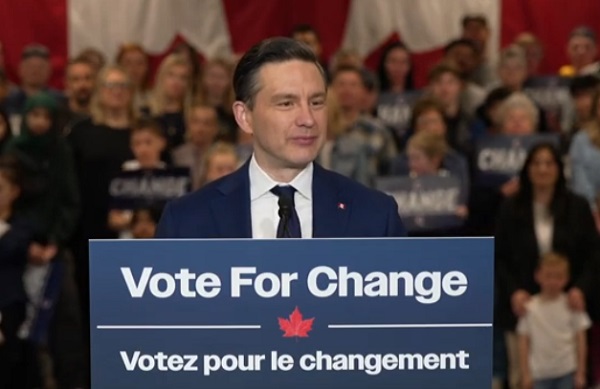
 2025 Federal Election2 days ago
2025 Federal Election2 days agoAs PM Poilievre would cancel summer holidays for MP’s so Ottawa can finally get back to work
-
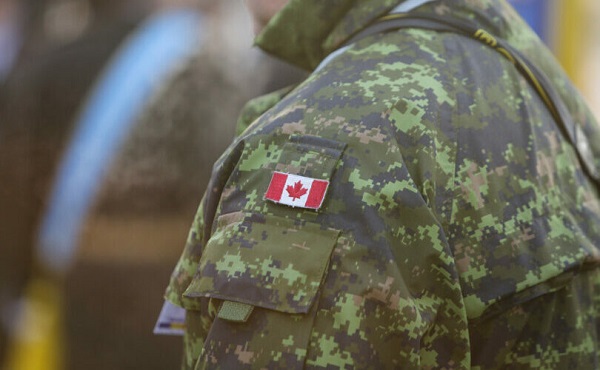
 armed forces1 day ago
armed forces1 day agoYet another struggling soldier says Veteran Affairs Canada offered him euthanasia
-

 2025 Federal Election2 days ago
2025 Federal Election2 days agoPoilievre Campaigning To Build A Canadian Economic Fortress
-
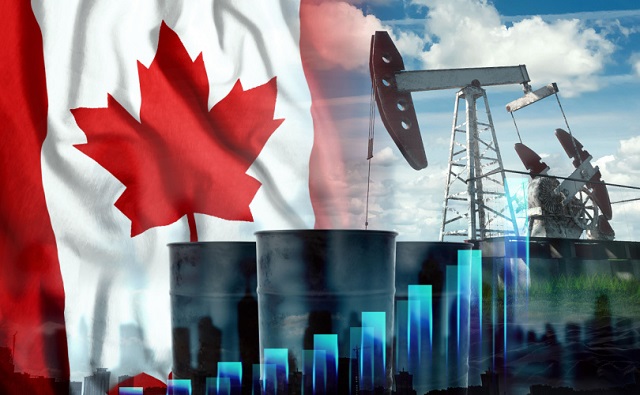
 2025 Federal Election2 days ago
2025 Federal Election2 days agoThe Cost of Underselling Canadian Oil and Gas to the USA
-
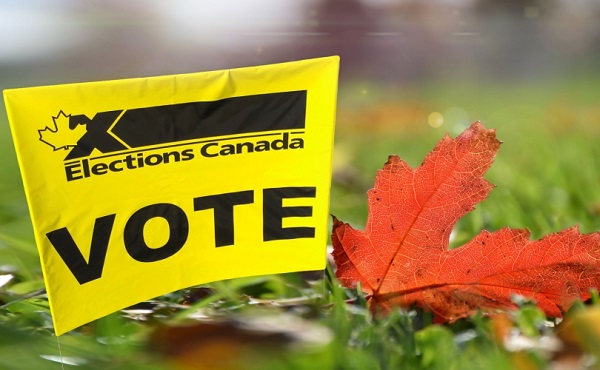
 Opinion7 hours ago
Opinion7 hours agoCanadians Must Turn Out in Historic Numbers—Following Taiwan’s Example to Defeat PRC Election Interference
-
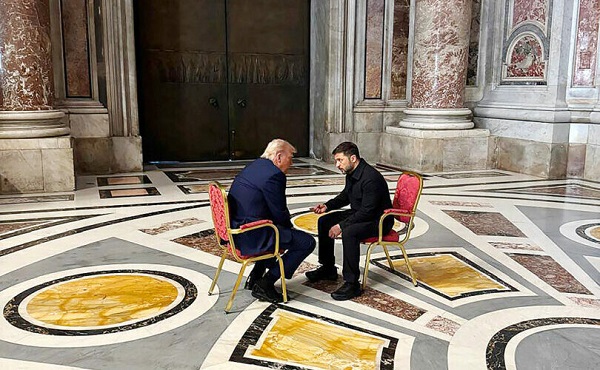
 International15 hours ago
International15 hours agoHistory in the making? Trump, Zelensky hold meeting about Ukraine war in Vatican ahead of Francis’ funeral
-

 Automotive2 days ago
Automotive2 days agoCanadians’ Interest in Buying an EV Falls for Third Year in a Row




